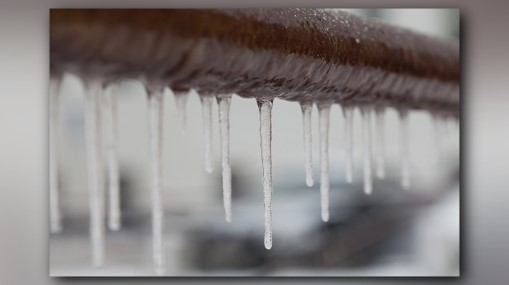Important Advice to Prevent Frozen Plumbing in Winter
Important Advice to Prevent Frozen Plumbing in Winter
Blog Article
Just how do you really feel with regards to How to prepare your home plumbing for winter weather?

Cold weather can ruin your plumbing, especially by freezing pipelines. Here's how to avoid it from occurring and what to do if it does.
Intro
As temperatures decrease, the danger of icy pipes rises, potentially bring about expensive repair services and water damage. Comprehending just how to stop icy pipelines is important for property owners in cool climates.
Prevention Tips
Protecting susceptible pipes
Wrap pipelines in insulation sleeves or use warmth tape to protect them from freezing temperature levels. Concentrate on pipelines in unheated or exterior locations of the home.
Home heating techniques
Maintain indoor rooms properly heated, specifically areas with pipes. Open cupboard doors to allow cozy air to circulate around pipelines under sinks.
How to determine frozen pipelines
Look for decreased water flow from taps, unusual odors or sounds from pipes, and visible frost on subjected pipelines.
Long-Term Solutions
Structural changes
Think about rerouting pipelines far from exterior wall surfaces or unheated locations. Add extra insulation to attic rooms, basements, and crawl spaces.
Upgrading insulation
Buy top notch insulation for pipes, attic rooms, and wall surfaces. Correct insulation assists keep constant temperature levels and lowers the threat of frozen pipes.
Shielding Outdoor Plumbing
Garden pipes and outside faucets
Disconnect and drain yard pipes before winter months. Install frost-proof spigots or cover outdoor faucets with shielded caps.
Understanding Icy Pipes
What triggers pipelines to ice up?
Pipes freeze when subjected to temperature levels below 32 ° F (0 ° C) for extended periods. As water inside the pipelines freezes, it expands, taxing the pipe wall surfaces and possibly causing them to rupture.
Threats and damages
Frozen pipes can cause supply of water disturbances, residential property damages, and expensive repair services. Ruptured pipes can flood homes and trigger considerable structural damages.
Indicators of Frozen Water Lines
Identifying icy pipelines early can stop them from rupturing.
What to Do If Your Pipelines Freeze
Immediate activities to take
If you presume frozen pipes, keep taps open up to eliminate stress as the ice melts. Use a hairdryer or towels soaked in warm water to thaw pipelines slowly.
Final thought
Preventing frozen pipelines requires aggressive measures and fast reactions. By comprehending the causes, indications, and safety nets, property owners can protect their pipes throughout cold weather.
5 Ways to Prevent Frozen Pipes
Drain Outdoor Faucets and Disconnect Hoses
First, close the shut-off valve that controls the flow of water in the pipe to your outdoor faucet. Then, head outside to disconnect and drain your hose and open the outdoor faucet to allow the water to completely drain out of the line. Turn off the faucet when done. Finally, head back to the shut-off valve and drain the remaining water inside the pipe into a bucket or container. Additionally, if you have a home irrigation system, you should consider hiring an expert to clear the system of water each year.
Insulate Pipes
One of the best and most cost-effective methods for preventing frozen water pipes is to wrap your pipes with insulation. This is especially important for areas in your home that aren’t exposed to heat, such as an attic. We suggest using foam sleeves, which can typically be found at your local hardware store.
Keep Heat Running at 65
Your pipes are located inside your walls, and the temperature there is much colder than the rest of the house. To prevent your pipes from freezing, The Insurance Information Institute suggests that you keep your home heated to at least 65 degrees, even when traveling. You may want to invest in smart devices that can keep an eye on the temperature in your home while you’re away.
Leave Water Dripping
Moving water — even a small trickle — can prevent ice from forming inside your pipes. When freezing temps are imminent, start a drip of water from all faucets that serve exposed pipes. Leaving a few faucets running will also help relieve pressure inside the pipes and help prevent a rupture if the water inside freezes.
Open Cupboard Doors
Warm your kitchen and bathroom pipes by opening cupboards and vanities. You should also leave your interior doors ajar to help warm air circulate evenly throughout your home.

Hopefully you liked our piece about How to Prevent Your Pipes From Freezing. Thank you so much for finding the time to browse our piece of content. Enjoyed our posting? Please share it. Let other people find it. We cherish reading our article about Prevent Frozen Pipes .
Book Now Report this page